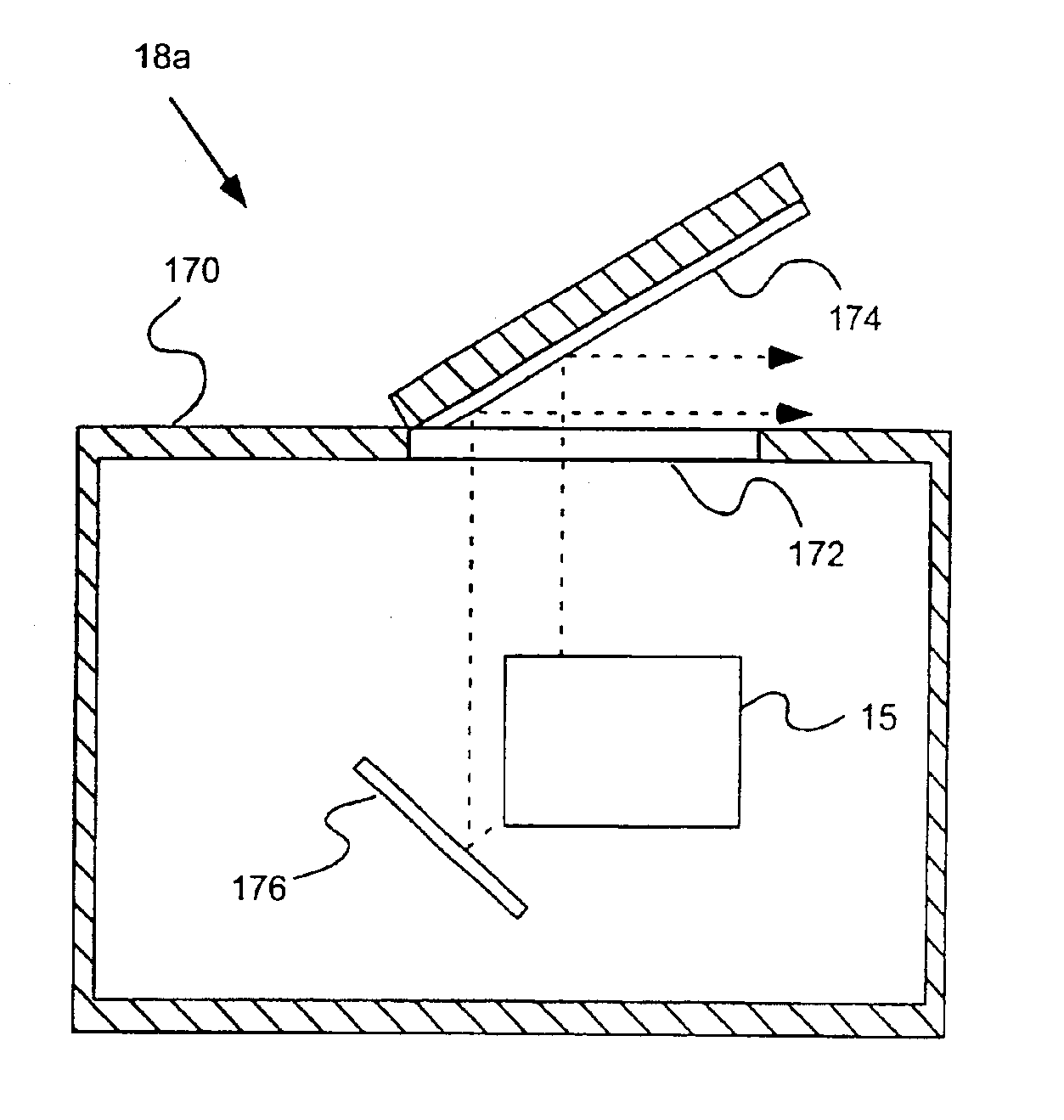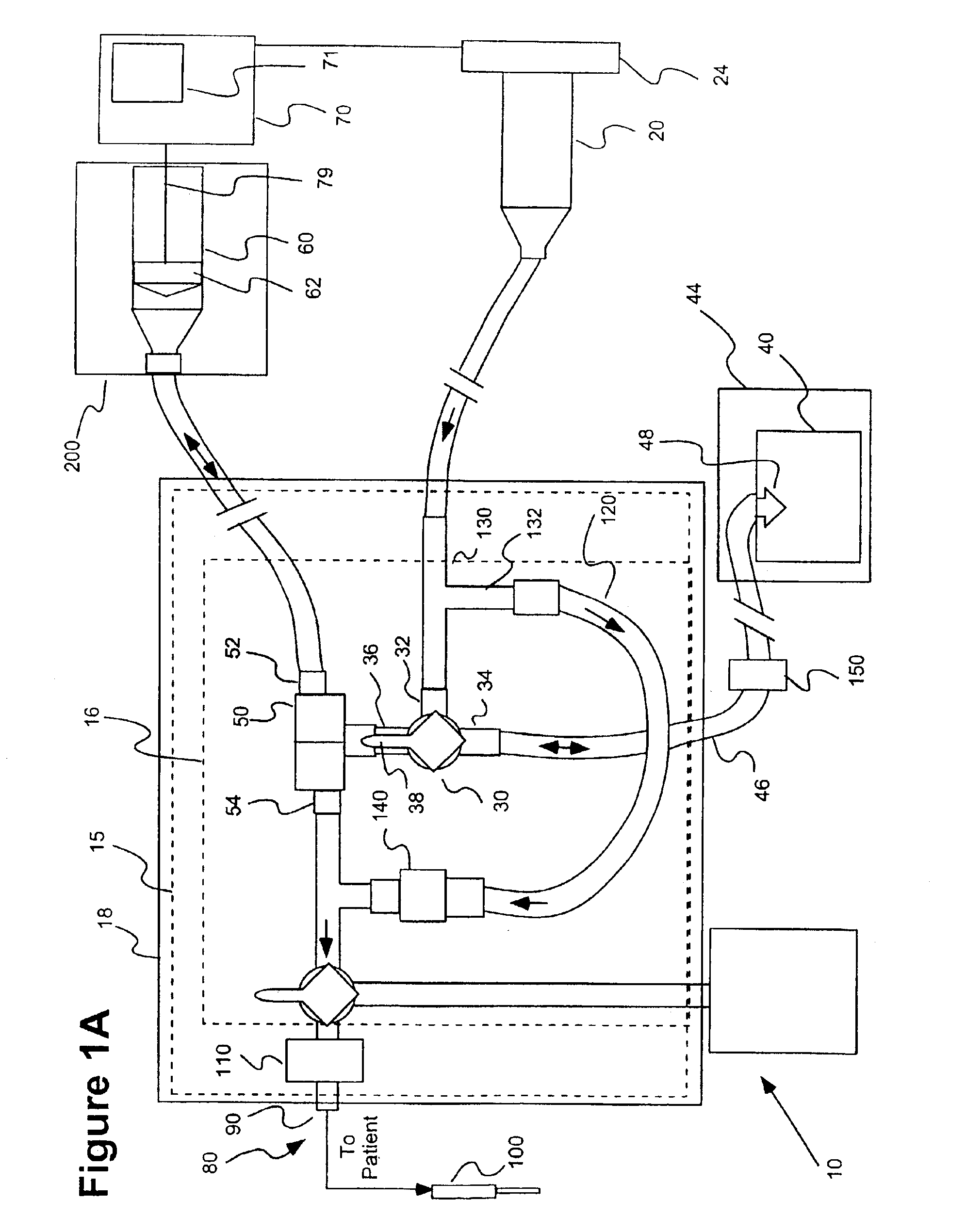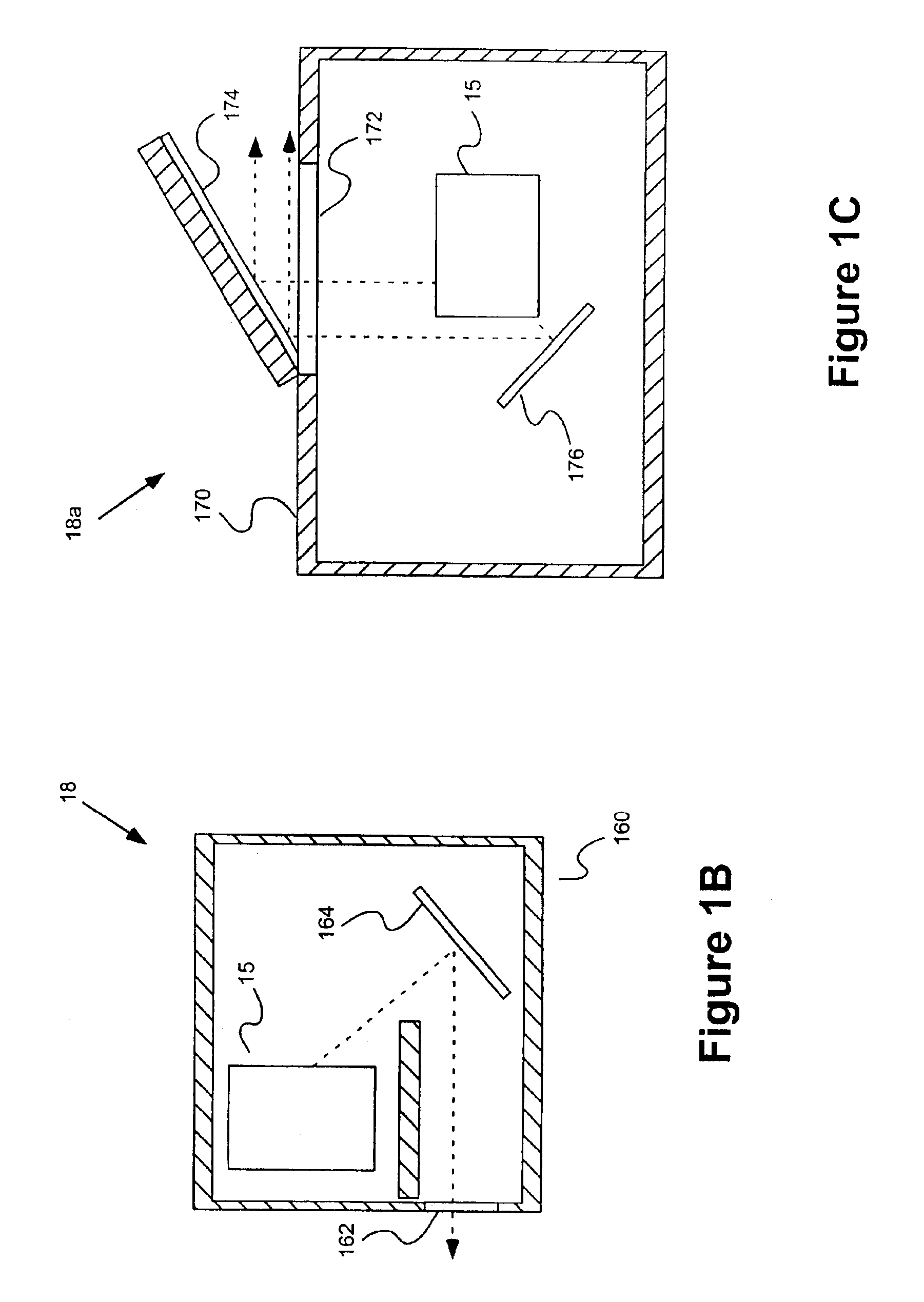Delivery methods, systems and components for use with radiopharmaceutical substances
a delivery method and radiopharmaceutical technology, applied in the field of delivery methods and systems, can solve the problems of posing a danger to both the patient and the personnel administering the substance, excessive radiation to technologists and other personnel working in the scanner room can pose a significant risk, and the half-life of the radiopharmaceutical is rather short, so as to enhance the effectiveness of the drug and prevent exposure. , the effect of enhancing patient safety
- Summary
- Abstract
- Description
- Claims
- Application Information
AI Technical Summary
Benefits of technology
Problems solved by technology
Method used
Image
Examples
Embodiment Construction
As illustrated in FIG. 1A, in one embodiment of the present invention, a system 10 includes a fluid delivery set or system 15 including a valve system 16 that provides a fluid connection for a saline source 20 (for example, a syringe), a source 40 of a pharmaceutical to be injected into a patient, a pressurizing chamber or unit for the pharmaceutical (for example, a syringe 60 in fluid connection with a powered injector 70 in the embodiment of FIG. 1) and a fluid path set 80 that is connectable to the patient (via, for example, tubing terminating in a catheter 100). In general, the fluid delivery set 16, valve system 15 and other elements of the present invention enable purging of air from the system, filling of syringe 60 with the pharmaceutical, delivery of the pharmaceutical (for example, injecting the pharmaceutical into the patient) via syringe 60, and providing a saline flush, while minimizing or eliminating exposure of administering or operating personnel to the detrimental e...
PUM
 Login to View More
Login to View More Abstract
Description
Claims
Application Information
 Login to View More
Login to View More - R&D
- Intellectual Property
- Life Sciences
- Materials
- Tech Scout
- Unparalleled Data Quality
- Higher Quality Content
- 60% Fewer Hallucinations
Browse by: Latest US Patents, China's latest patents, Technical Efficacy Thesaurus, Application Domain, Technology Topic, Popular Technical Reports.
© 2025 PatSnap. All rights reserved.Legal|Privacy policy|Modern Slavery Act Transparency Statement|Sitemap|About US| Contact US: help@patsnap.com



